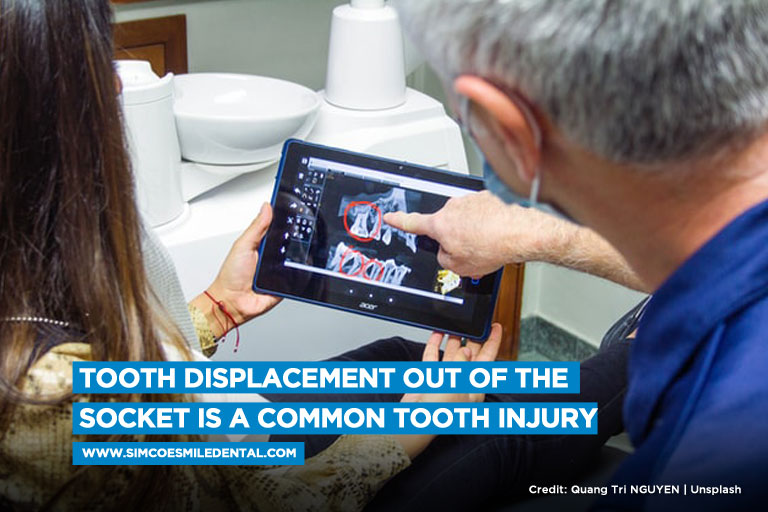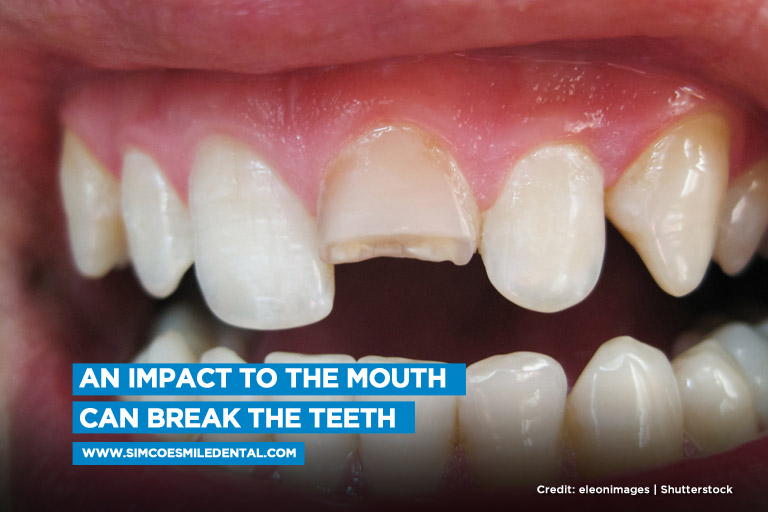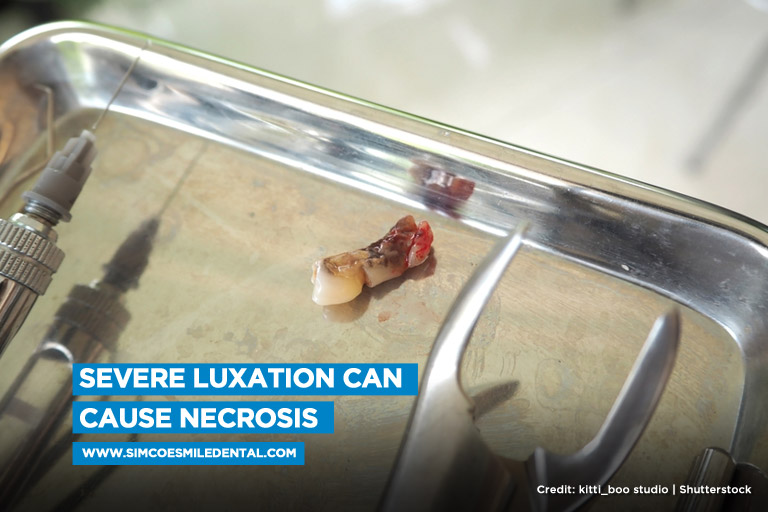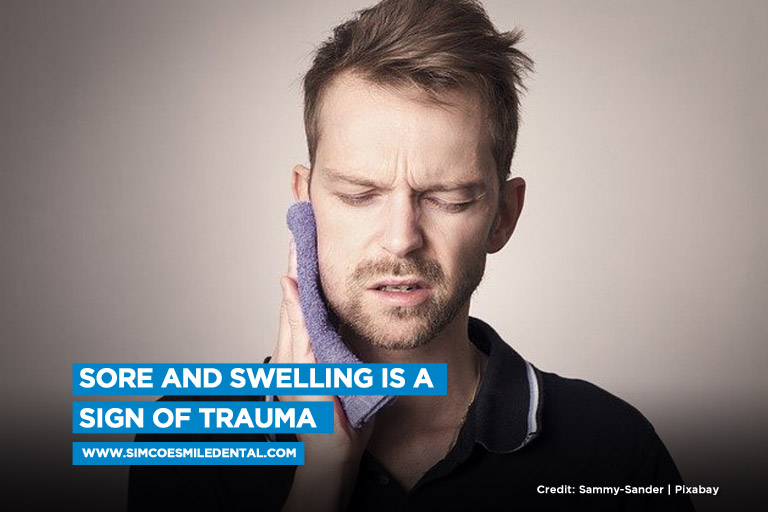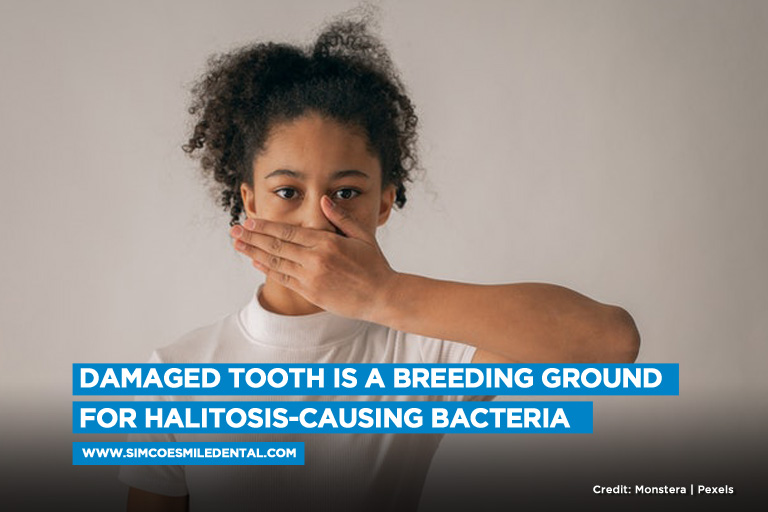Despite our best efforts, accidents to our mouths and teeth can happen. You may hurt your teeth because of a bad habit, an accident, or while participating in sports. If you have a tooth that has been knocked out or ripped away from its socket, you need to seek immediate first aid and dental care.
Your gums, lips, tongue, or inner cheeks, the roof of your mouth (soft and hard palates), under your tongue, your neck, or your teeth can all be affected by a mouth condition. Because there are so many blood arteries in the head and neck area, even a little cut or puncture inside the mouth might cause it to bleed profusely. Dental traumas are classified based on the severity of the injury, which is determined by which tissue or tissues have been affected and how much damage has been done.
Here are 8 common types of dental trauma you should know about:
Types of Dental Trauma
- Concussion
A dental trauma concussion is the most minor sort of dental damage cause by trauma. The periodontal ligament fibres may be pulled, and a few may be torn, but there is still adequate support to keep the tooth intact in the socket. The tooth may be sensitive to the touch or diagnostic tapping, and the gums around it may swell and bleed. In the dental pulp, the neurovascular structures are unharmed.
- Subluxation
A subluxation might be regarded as an exacerbation of a concussion. There is increased damage to the periodontal ligament, with more fibres, as well as some gingival capillaries, broken or strained. Although the tooth remains in its socket, it is possible to observe some movement. There is edema of the gingiva surrounding the tooth, as well as interstitial hemorrhage from within the tooth-gum boundary. There is pain when the tooth is touched or pressed, and the pulp’s neurovascular bundle may be damaged.
- Alveolar Fracture
An alveolar fracture is a bone displacement that might be difficult to diagnose at first glance, according to a study. The fracture can be caused by a high-speed object colliding with the gum line area. If you suffer a blow to the mouth, it’s in your best interest to seek medical or dental attention. In some cases, in an alveolar ridge fracture, the teeth and gums may appear pushed back and may even bleed. This normally requires a trip to the emergency department. If a misalignment happens, no matter how minor or serious, do the right thing and seek treatment straight away.
- Avulsion
With this type of dental trauma, the tooth is completely displaced out of the socket. A part of the tooth root may remain inside the socket if it has been shattered. The root periodontal ligament and the pulp neurovascular supply are both entirely ruptured. This form of trauma is very likely to result in tooth loss.
If you act immediately, the dentist may be able to replant a knocked-out tooth. Within 5 minutes of the accident, the tooth should be cleaned with cool, clean water without touching the root and then inserted into the empty socket. Even if the tooth is saved and replanted, there is still the possibility that the immune system will not recognize it and reject it. A replanted tooth that is rejected will become ankylosed (fused to the bone) and ultimately resorbed.
- Broken Teeth
Broken teeth are dental traumas that cause tooth injury and seldom result in displacement. Teeth can be broken, fractured, chipped, or ripped out. The Ellis fracture classification system is used to determine the severity of a fractured tooth injury. This approach determines severity degrees according to whether or not the injury has harmed the enamel, dentin, or pulp:
- Ellis Class I fracture – Only the enamel layer is affected. This isn’t severe and can easily be treated with cosmetic dentistry.
- Ellis Class II fracture – Both the enamel and dentin layers are affected. Class II fractures require either direct or indirect dental repairs because germs can rapidly develop within the dentin tubules.
- Ellis Class III fracture – The enamel, dentin, and pulp layers are affected.. Class III fractures are true medical emergencies; they frequently come with bleeding and severe pain. Without quick treatment, infection of the pulp, gums, or jawbones can occur.
- Extrusive Luxation
A dental luxation injury occurs when a tooth is dislodged as a result of significant trauma. A luxation always involves a partial (and sometimes complete) rupture of the periodontal ligament, as well as substantial damage to or complete severance of the dental pulp’s blood vessels and nerve fibers. The possibility of complete dental pulp healing drops by around 50% when the tooth is displaced by simply 5 mm or more.
In an extrusion, the tooth is displaced outwards away from the tooth socket. Because part of the tooth root has been exposed, the tooth appears to have lengthened. In most cases, the alveolar bone in the tooth socket is not harmed.
- Intrusive Luxation
In an intrusive luxation, a tooth is forced deeper into the alveolar socket. The alveolar bone has been crushed and shattered. The periodontal ligament, as well as the pulp blood and nerve connections, are ripped and compressed. The tooth may get entirely immersed in the jawbone and even pierce the nasal cavity at times. Pulpal necrosis may occur as a result of an intrusive luxation.
- Lateral Luxation
Lateral luxation is defined as tooth displacement that is almost parallel to the tooth’s axial or longitudinal axis. The socket alveolar bone is usually fractured in this sort of luxation, and it’s extremely prevalent on either the labial (lip) or palatal/lingual (palate/tongue) side of either jaw arch. The periodontal ligament and pulpal neurovascular connections may be partially or completely lacerated. The periodontal ligament on the fractured side is severely compressed.
Symptoms of Dental Trauma
Pain is one of the most obvious signs of a tooth injury, in fact, here are some dental pains not to be ignored. However, there are additional symptoms you need to be aware of, including:
- Sores
Individuals may experience swelling and redness of the oral lining, as well as painful ulcers. An ulcer is a sore that develops when the top layer of cells in the mouth lining breaks down, resulting in a hole. Although most ulcers are red, some are white due to dead cells and debris in the core. Blisters are lesions filled with a clear fluid called vesicles or bullae, depending on size.
- Infections
Bacteria can spread down to the root of a tooth if it is damaged by an untreated cavity, a broken tooth, or gum disease. As a result, a pus-filled pocket may occur. The abscess may come to the surface and rupture in certain situations, providing short-term relief. At times, you may not even be aware that you have a tooth abscess. An x-ray may be required to diagnose the issue before the infection spreads to your bone.
- Discolouration
A discoloured tooth after trauma is common, similar to how your knees turn black and blue after a fall. When a tooth turns grey after an accident, it’s a symptom that it’s not getting enough blood. The tooth may heal on its own in some situations, but it is more common for the tooth to become discoloured or even die.
- Halitosis
A damaged tooth can cause halitosis or bad breath. Chipped and cracked teeth, as well as fillings, provide space for food or bacteria. Bacterial development near a fractured tooth will do more than just give you bad breath. If the condition remains, germs will continue to multiply, causing bad breath to worsen.
While some injuries are too severe to save a traumatized tooth, getting dental care as soon as possible boosts the odds of the tooth’s survival. Keep cool and contact your dentist right away.
For your dental emergency in Oshawa needs, visit Simcoe Smile Dental. To book an appointment, call us at (289) 312-1482 or visit our Oshawa dental office.
References:
- Zvi Gutmacher, Eli Peled, Doron Norman, Shaul Lin. Alveolar Bone Fracture: Pathognomonic Sign for Clinical Diagnosis. Open Dentistry Journal v.11; 2017 PMC5362980
- Pagadala S, Tadikonda DC. An overview of classification of dental trauma. International Archives of Integrated Medicine, Vol. 2, Issue 9, September, 2015.

